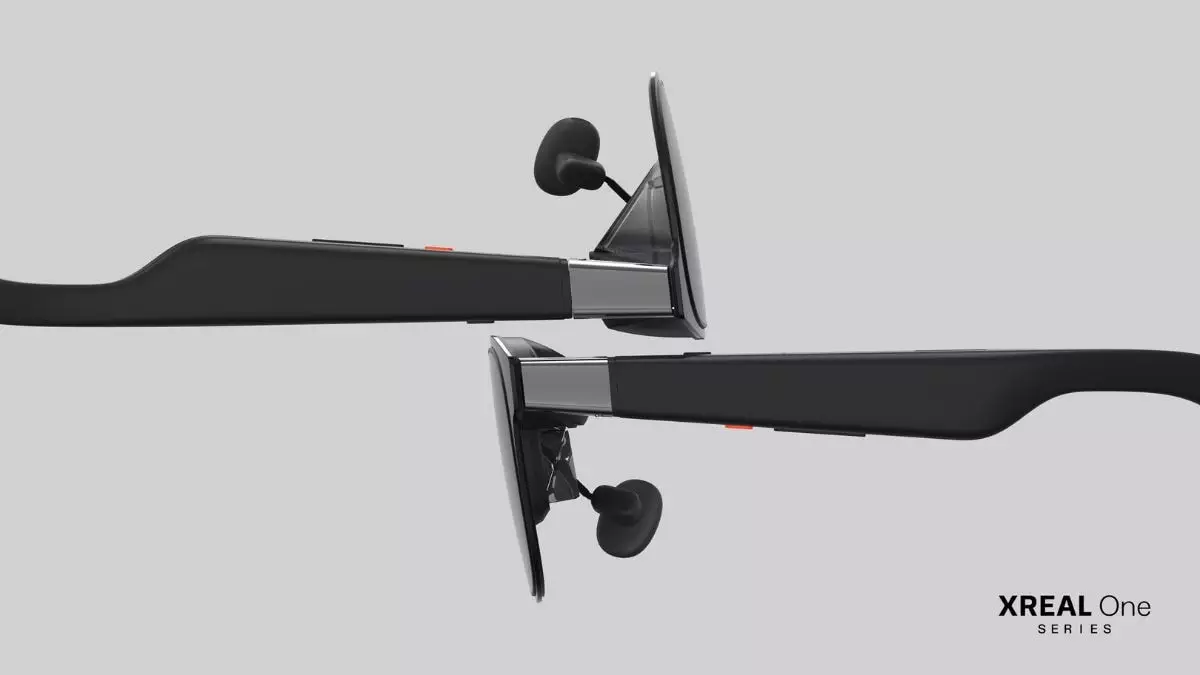The launch of the Xreal One series augmented reality (AR) glasses marks a significant advancement in the realm of spatial computing technology. Released by the Chinese startup Xreal, these glasses feature cutting-edge innovations such as the independent X1 spatial computing chip, promising a leap forward in AR experiences. This article will delve into the salient features and implications of this new AR tech while also examining its positions in the competitive landscape of augmented reality devices.
At the heart of the Xreal One series is the proprietary X1 chip, which allows for comprehensive control over spatial screens. This integration promises a seamless user experience, paving the way for more natural interactions within virtual spaces. The glasses are available in two models: the Xreal One and the enhanced One Pro. Priced at $499 and $599 respectively, these models are positioned competitively within the AR market.
Apart from performance, one of the standout features is the redesigned optical engine. This advancement allows for improved visuals, providing a resolution equivalent to 1080p for each eye and a 50-degree field of view (FOV). Additionally, the base model showcases a significant increase in display area compared to its predecessor, the Xreal Air 2, which should enhance user immersion considerably.
Xreal recognizes the diversity in user needs by offering extensive customization options tailored to individual preferences. Users can adjust settings such as screen size, brightness, and sound, allowing for an experience finely tuned to their personal requirements. This level of customization is particularly vital in today’s market, as consumers increasingly demand devices that adapt to their lifestyles rather than the other way around.
Moreover, the ability for users to connect these glasses with multiple devices—including smartphones, gaming consoles, and computers—allows for versatile use cases. For instance, whether you’re projecting mobile games into your personal space or attending virtual meetings, the Xreal One glasses can adapt to those scenarios with a low motion-to-photon (M2P) latency of merely 3ms. Coupled with the capability of supporting a refresh rate of up to 120Hz, these features position the Xreal One series as a compelling option for both leisure and productivity.
Audio quality is often overlooked in AR technologies, yet Xreal has partnered with Bose to enhance auditory experiences in the One series. The inclusion of a quad microphone setup ensures high-fidelity sound capture, making the glasses suitable for both gaming and professional applications, such as video conferencing. Additionally, both models have received TUV Rheinland certification, emphasizing their low blue-light output and flicker-free experience, which is crucial for prolonged use.
A noteworthy aspect of the Xreal One series is the modular RGB camera, known as Xreal Eye. This accessory can capture high-resolution photos and videos, adding a tangible element to the AR experience. Future updates are expected to introduce multimodal features, such as image recognition and voice command integration, further enriching how users interact with their surroundings.
While the glasses provide a magnesium alloy chassis for durability, the option to customize the front frame adds a personal touch, making the device more than just a tech gadget—it becomes a fashion accessory as well.
The release of the Xreal One series augmented reality glasses is a critical milestone in the evolution of AR technology. With features that enhance spatial computing, audiovisual quality, and user customization, Xreal is likely to carve out a significant niche in the competitive landscape of AR devices. As the company rolls out its products globally in markets such as the US, UK, and various European countries, it will be interesting to see how consumers respond to this technology.
The ability to pre-order these devices indicates strong anticipation, but the true test will lie in their real-world applications and the value they add to everyday tasks. If Xreal can deliver on its promises, the One series may indeed revolutionize how we engage with both virtual and physical worlds.

